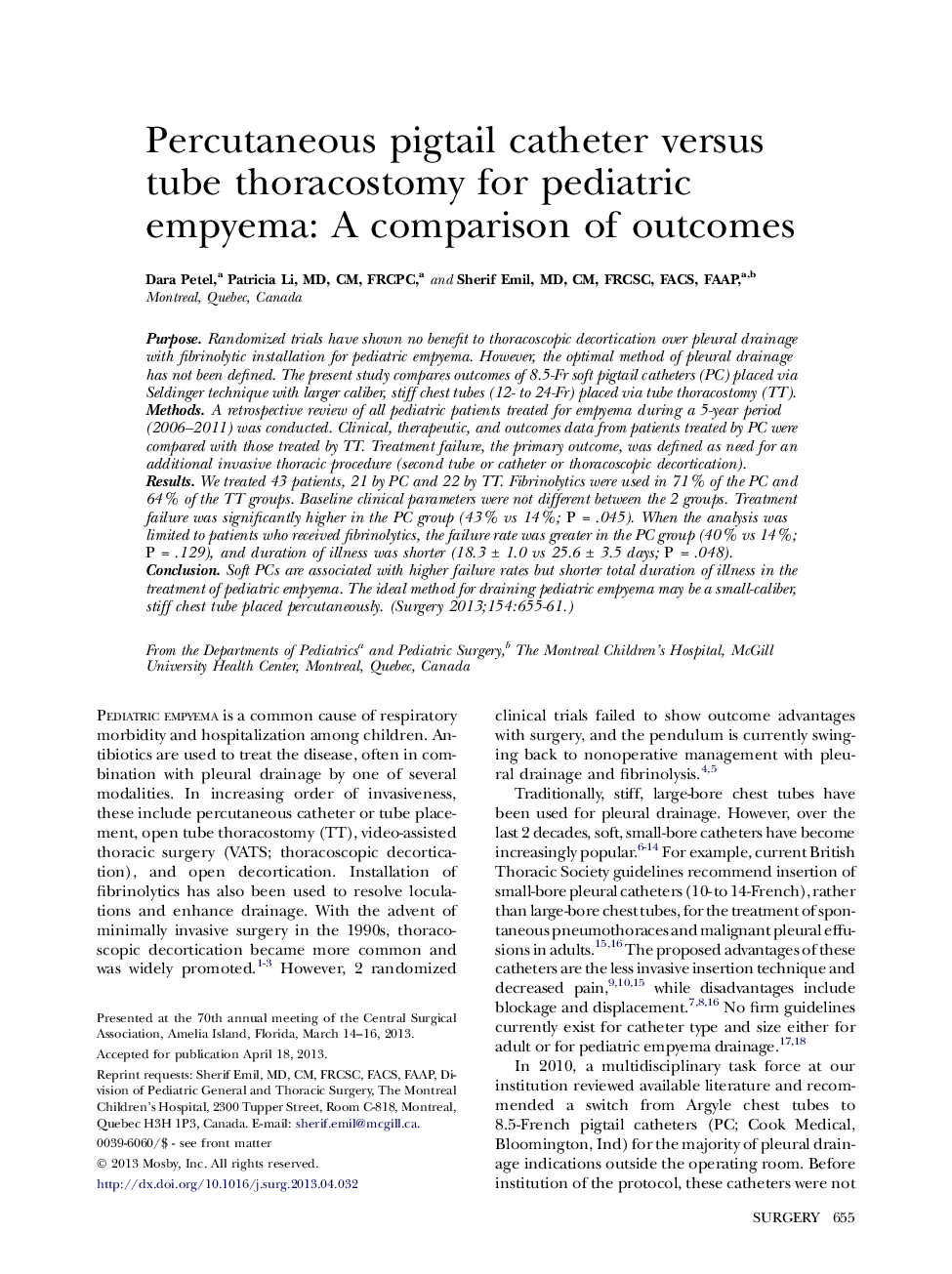| Article ID | Journal | Published Year | Pages | File Type |
|---|---|---|---|---|
| 4307532 | Surgery | 2013 | 7 Pages |
PurposeRandomized trials have shown no benefit to thoracoscopic decortication over pleural drainage with fibrinolytic installation for pediatric empyema. However, the optimal method of pleural drainage has not been defined. The present study compares outcomes of 8.5-Fr soft pigtail catheters (PC) placed via Seldinger technique with larger caliber, stiff chest tubes (12- to 24-Fr) placed via tube thoracostomy (TT).MethodsA retrospective review of all pediatric patients treated for empyema during a 5-year period (2006–2011) was conducted. Clinical, therapeutic, and outcomes data from patients treated by PC were compared with those treated by TT. Treatment failure, the primary outcome, was defined as need for an additional invasive thoracic procedure (second tube or catheter or thoracoscopic decortication).ResultsWe treated 43 patients, 21 by PC and 22 by TT. Fibrinolytics were used in 71% of the PC and 64% of the TT groups. Baseline clinical parameters were not different between the 2 groups. Treatment failure was significantly higher in the PC group (43% vs 14%; P = .045). When the analysis was limited to patients who received fibrinolytics, the failure rate was greater in the PC group (40% vs 14%; P = .129), and duration of illness was shorter (18.3 ± 1.0 vs 25.6 ± 3.5 days; P = .048).ConclusionSoft PCs are associated with higher failure rates but shorter total duration of illness in the treatment of pediatric empyema. The ideal method for draining pediatric empyema may be a small-caliber, stiff chest tube placed percutaneously.
